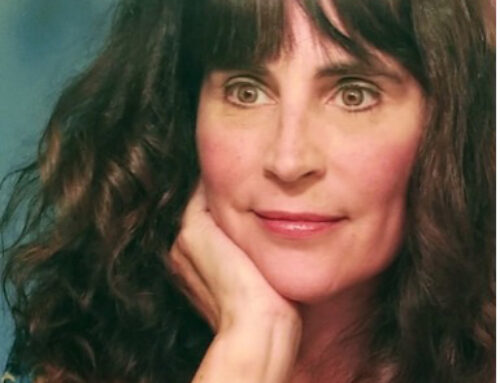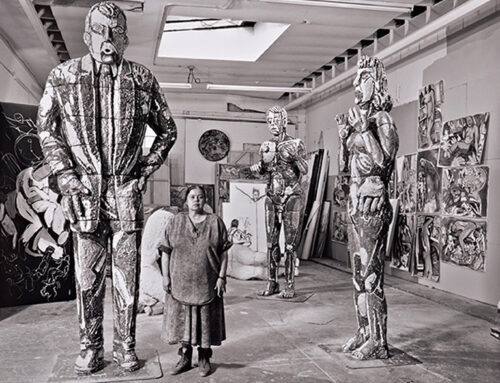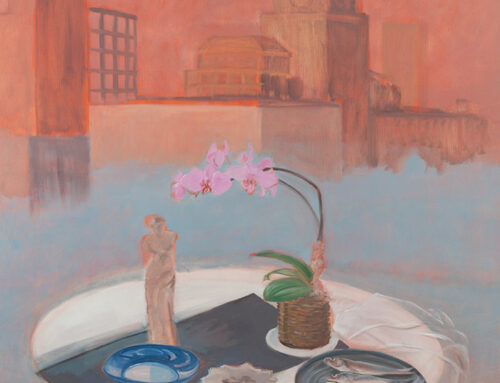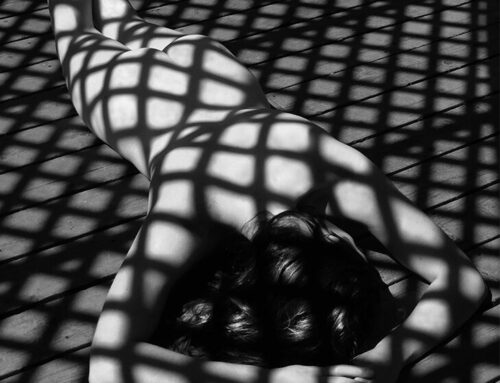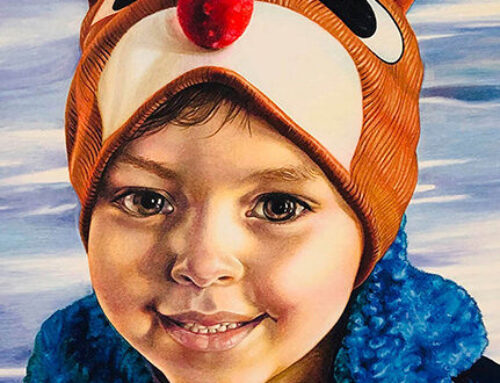LUCINDA ABRA
The word collage is from the French “coller”, to paste. Although you may have read that Pablo Picasso and Georges Braque invented collaging in 1912, this is incorrect. The fact is that in 1772, at the age of 72, Mary Delany started creating collages of botanically correct, breathtakingly beautiful flowers. Her body of work, now at the British Museum, is referred to as Flora Delanica. More can be read on Mary Delany’s amazing creativity in Molly Peacock’s book, The Paper Garden.
Scissors, a sharp Exacto blade, and a steady hand cut various elements from the many books, slowly assembling a strong narrative. I start with a concept, a feeling, or a thought and build on it. In choosing cut pieces of paper, images begin to appear. In particular, I find the negative spaces to be an essential element of the whole. It is there that work gets fleshed out in color, composition, and narrative.
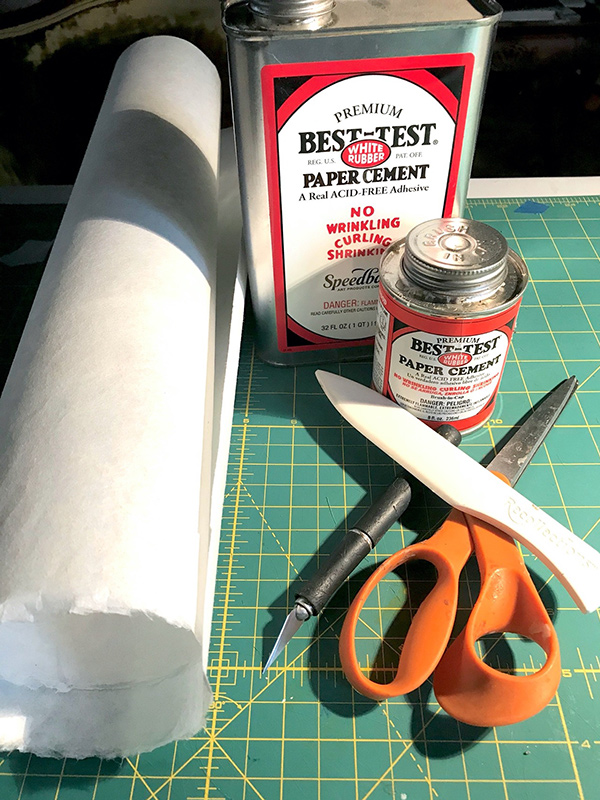
Once I have all the bits laid out to make a successful collage, I carefully glue them down, one at a time, with paper glue on mulberry paper (a very tough pH neutral paper), noting the interaction between layers. The excess adhesive is pushed out with a plastic bone folder (made initially to make perfect creases and folds in the paper for books) starting from the center. Afterward, I may use graphite or acrylic paint to make additional changes.
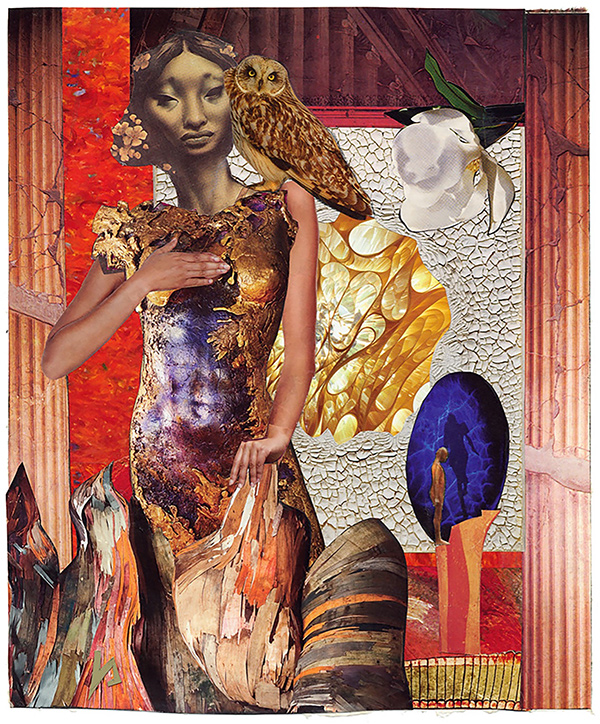
Wisdom, 27 in. X 41 in. encaustic, oil, and collage on wood.
Often using the collage as a sketch, the image is printed larger. Then, I carefully cut it, a collage born anew! Piece by piece, this is encased in encaustic on a wood surface and then painted with both oil paints and encaustic pigments, where elements can be added, subtracted, or adjusted.
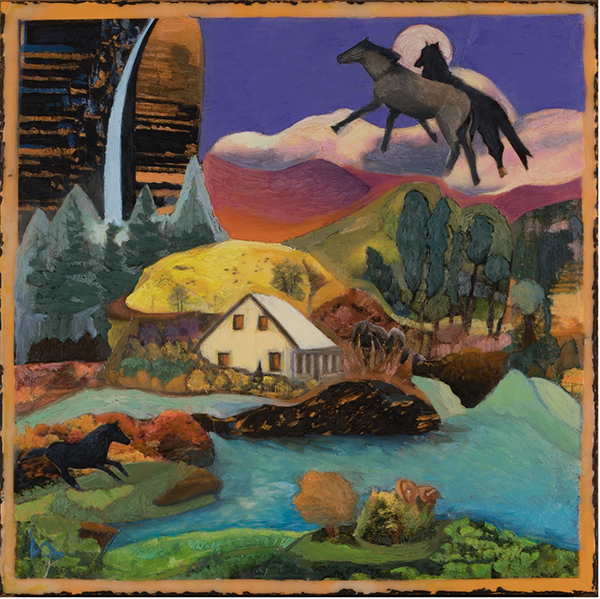
Haven, 14 in. X 14 in. encaustic, oil, and collage on wood.
I find the process quietly mesmerizing and remarkably a mirror to life itself, taking parts and portions to make a satisfying whole.



